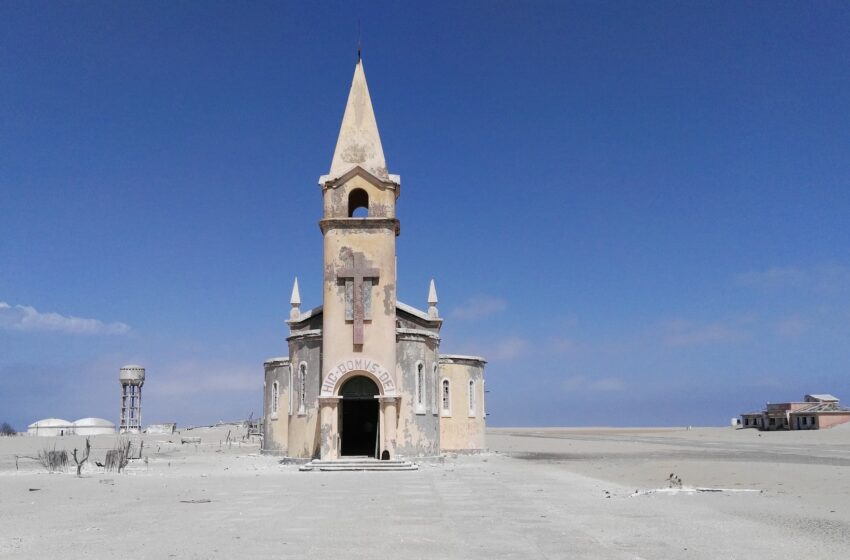
Angola’s Only Travel Guide You Need For A Great Trip in 11 Easy Steps
- Destinations Africa
Cruisit Team
- April 28, 2022
- 0
- 4600
- 65 minutes read
Angola’s Background
Angola was embroiled in a long-running civil war and proxy Cold War, fueled by the Soviet Union, Cuba, South Africa, and the United States all competing for mineral and oil resources (also flashy diamonds) that lasted for 27 years. The war began after Angola gained independence from Portugal in 1975 and lasted until 2002. Fighting erupted between the Popular Movement for the Liberation of Angola (MPLA) led by Jose Eduardo Dos Santos, and the National Union for the Total Independence of Angola (UNITA) led by Jonas Savimbi, an Angolan revolutionary politician and rebel military leader.
When Angola had national elections in 1992, peace appeared to be on the horizon, but UNITA resumed violence after being defeated by the MPLA. During the quarter-century of conflict, up to 1.5 million people may have died and 4 million people may have been displaced. Savimbi’s death in 2002 effectively put an end to UNITA’s insurgency and consolidated the MPLA’s grip on power. Dos Santos has stated that national elections would be held in 2006.
While the country of Angola may be big on the map, it’s virtually invisible when it comes to tourism. After the conflict that sealed it off from the rest of the world, this former Portuguese colony is just now opening up its doors to visitors.
“A Mystical African Nation Waiting
for its Wilderness to be discovered as
it rises Anew, Angola”
Angola is one of Africa’s last major travel mysteries for most people. Despite its raw landscapes and boom-bust oil-dependent economy, the nation remains off-limits to all but the most daring visitors due to rigorous visa regulations, hefty prices, and a history that has been more about conflict than peace.
It’s a pity. Angola has the potential to be one of Africa’s bright spots. Within its untamed wilderness and nature lurks the continent’s second-largest waterfall, scattered remains of Portuguese colonial history, a smattering of growing national parks, beaches galore, and a diverse and incredibly stoic cross-section of people.
It’s anyone’s guess if Angola will ever open up to foreigners. The tourism business is still in its infancy and has yet to stretch its wings and take flight. The sooner the administration addresses the country’s persistent political difficulties, the sooner it will be able to rise from its extended slumber and show the world what it has been missing.
As Angola’s reputation as a war-torn country fades, more tourists are wanting to visit this previously unknown country.
- Markets are a terrific opportunity to get a feel for the local culture. Tunga N’go Market in Rangel, Benfica Market in Luanda, and Feira de Artesanato Market (Operates on the first Saturday of each month)
- See Whales on the South Coast
- Spot the diverse Wildlife in Kissama National Park (The only functioning National park)
- Explore Prehistoric Angola in Tchitundu Hulu, near the coastal town of Namibe.
- Marvel at the Cathedral of the Holy Savior, a Roman Catholic church constructed in 1628
- Visit the huge Saint Michael Fortress
- Admire the mist coming from massive Kalandula Falls
- Hear sob stories at the National Museum of Slavery
- Bring yourself to a halt at Miradouro da Lua’s natural beauty
- Hike Tundavala and admire the scenery from the top
- Book your accommodation at least three months in advance as they fill up quickly.
- It helps to speak Portuguese while in Angola, think about brushing up on some and downloading Portuguese on translation apps. People in the capital speak some English, and Spanish may also be used to get by.
- Bargaining is acceptable, and you must shoot for half to two-thirds of the original price, as they often hike it for tourists.
- Landmines are an issue in Angola so always travel on tracked and known roads.
- Always keep an eye on the forecast; flash floods can occur at any time, putting your life in jeopardy. Especially if you’re traveling between October to May.
- Do not consider or attempt to consider traveling alone in this nation. Angola is a difficult nation with few tourists to speak of, therefore there is no tourism infrastructure in place to enjoy solo travel. Stick with tour companies and professionals.
- Angola’s tribespeople are incredibly photogenic, but don’t assume they like being filmed. Always politely before hitting the shutter.
- When visiting the many gorgeous tribes, do not rush in as if you are in a human zoo; instead, be polite, mindful, and sensitive. In general, tribespeople may be quite friendly.
- Angola is more expensive to visit than other African nations since it receives few tourists and requires a highly competent tour operator with contacts to navigate.
- Your plans may be altered as things can get unpredictable, bring patience to Angola
- Driving in Angola can be very nerve-wracking, we don’t recommend you attempt driving, but we do encourage you to practice patience when using transportation.
- Once in Angola, cash is king, as always around the world! Forget about your cards and Apple/Google pay of course. Get enough to cover the trip and 25% more as a reserve.
Angola has a high rate of crime. Petty theft to armed robbery and carjacking are all common crimes. At night, the chance of violent crime is substantially higher. Don’t go on a walk alone or late at night.
Criminals have kidnapped foreigners from their cars in and around Luanda. Even while you’re moving, keep your doors and windows locked. Be on the lookout for efforts to halt your car.
In Cabinda, Lunda Norte, and Lunda Sul, civil disturbance is widespread. Protests can get violent. Large public gatherings should be avoided. Due to the potential of civil upheaval and violent crime, reconsider your need to go to Cabinda, Lunda Norte, and Lunda Sul.
Flash flooding is possible during the rainy season, which lasts from October to May. It has the potential to harm infrastructure and disrupt services. Adhere to the advise of local authority.
Landmines are a big issue in Angola so always travel on tracked and known roads. They are most frequent on minor roads in rural regions and near the Zambian border, but they can occasionally appear along major routes. Fortunately, every location where a landmine is suspected will have a warning sign, generally a red and white Halo Trust post or a red stone. Broken-down autos, people on the road, and wandering animals are additional risks in more rural locations.
Health
There are polio epidemics. Consult your doctor at least 8 weeks before your trip to determine your vaccine requirements.
The prevalence of HIV/AIDS infection is high. If you are participating in high-risk activities, take measures.
Malaria, dengue fever, filariasis, African sleeping sickness, and yellow fever are all insect-borne illnesses. Make sure your lodging is insect-proof. Make use of bug repellant.
Infections with the Zika virus occur in Angola. If you are pregnant, see your doctor.
Angola’s medical facilities are severely lacking. If you get extremely ill or injured, you may need to be moved to another nation with sufficient facilities, which may be problematic given the COVID-19 limitations. Medical evacuation may be rather costly.
Angola, in general, has two different seasons: wet and dry. Because it is so vast, there are variances, with the southern shore at Namibe, for example, being colder, averaging 17°C in July. Tours focus on the south, with the ideal months to visit being June, July, August, and September; our 10-day trip travels yearly in July. This is the coldest and driest season, with highs in Luanda in July hovering around 23°C. Angola’s hot, rainy season lasts from November to May, with April bringing the biggest downpours and frequently severe storms. The water that presently falls in the Angolan Highlands eventually travels into Botswana, where it forms the Okavango Delta.
By Land
Border crossing through overland routes from and into neighboring nations are normally closed, however, conditions are liable to change on a regular basis.
The Republic of the Congo borders Angola to the far northwest, the Democratic Republic of the Congo to the north and northeast, Zambia to the southeast, Namibia to the south, and the Atlantic Ocean to the west.
By Boat
Lobito, Luanda, Malongo, and Namibe are the only ports that are operating.
By Train
The Benguela Railway has been reconstructed thanks to major Chinese assistance. This connects the port of Lobito to the border town of Luau, with trains continuing on to the Democratic Republic of the Congo and Zambia.
By Plane
There are a number of Airlines that serve Angola which includes Emirates Airlines, Ethiopian Airlines, Taag Angola Airlines, and TAP Portugal Airlines.
Aeroflot, British Airways, Brussels Airlines, Lufthansa, Air France, Cubana, Delta Air Lines, Royal Air Maroc, Iberia, Hainan Airlines, Kenya Airways, South African Airways, and other regional airlines also service Angola. Benguela, Cabinda, Huambo, Moçâmedes, and Catumbela all have airstrips.
As for public transportation, you don’t have many options to help you avoid driving. Because taxis are scarce in Luanda, travelers arriving at the airport should have pre-booked vehicle service to their hotel.
By Plane
Fly Angola and TAAG Angola operate internal flights to different major cities inside the country.
By Train
The Railways that operate in Angola are:
- Luanda Railway (CFL) (northern)
- Benguela Railway (CFB) (central)
- Moçâmedes Railway (CFM) (southern)
The reconstruction of all three lines began in 2005, and they are all operational.
There are three ticket types: Primeira (the most expensive), expresso, and tramway (the cheapest). The carriages are normally clean and contemporary, with a restaurant car and working bathrooms. The middle line, which serves Luau, Lobito, Cubal, and Huambo, is likewise fully operational.
By Metro
The governments of Angola and Germany signed a memorandum of agreement in February 2020 to build a surface metro in Luanda. Ricardo de Abreu, the Minister of Transportation, stated in July that the first phase, which will connect the Port of Luanda to the Kilambia district just outside of Luanda, will cost USD 3 billion and will begin construction in 2022. Angola will hold 30% of the project. Siemens Mobility is slated to build the light rail system, which will feature 149 kilometers of track.
By Bus
The primary mode of transportation is little blue and white buses are known as “Candongueiros,” however the vehicles are poor and packed, and the drivers are frequently unlicensed. These drivers are likewise known to speed and have been involved in tragic accidents.
By Car
Several roads in Angola are impassable without a four-wheel drive SUVs, and external variables like runaway animals and severely packed trucks imply that preparing for the unforeseen is the best approach.
Roads should be managed with particular caution during the rainy season since the numerous potholes can cause severe damage to cars if drivers are not cautious. Local drivers are likewise notorious for their unsafe driving. When coupled with the fact that very few roads are paved and clearly delineated, this offers even more reason to employ an expert driver.
SIM cards are inexpensive and can be customized to fit into any smartphone, making them ideal for use in Angola. Wifi will be slower than it is in the United States, Europe, or Japan. As a result, don’t expect to be viewing streaming movies or doing much more than your typical business and emailing.
Unitel is Angola’s largest telecom operator, and as a result, it has the most coverage in the country. In unitel stores, a Unitel SIM card, technically known as a Prepago SIM, may be purchased for 900 AOA. They are also available at supermarkets and airport shops, so you may grab one as soon as you arrive.
Movicel is Angola’s other major telecom operator. It is, nevertheless, smaller than unitel. Their coverage is likewise less extensive than that of the other. If you want to remain in the cities, it should be sufficient. A Movicel SIM card costs 900 AOA and is available at movicel outlets, supermarkets, and airport shops.
Top Places in Angola

Miradouro da Lua
Miradouro da Lua, or, to translate from Portuguese, “Viewpoint of the Moon,” or, let’s say, Mars. A beautiful geological group of cliffs in the Municipality of Belas, which is part of the Province of Luanda in the Republic of Angola.
Miradouro do Lua, located 40 kilometers (25 miles) south of the capital city of Luanda, is a tricolor karst structure that was carved out by erosion induced by wind and rain, giving this site the appearance of being from another planet, or in this instance the moon.
Tundavala
The Tundavala Fissure is one of Angola’s most magnificent natural wonders. It is located between the cities of Lubango and Namibe at an elevation of 2,600m above sea level, and the views from the summit are unrivaled. The view of the slope back down to sea level is a bit frightening for the faint of heart, thats why it’s’ commonly accessed by thrill-seeking hikers.
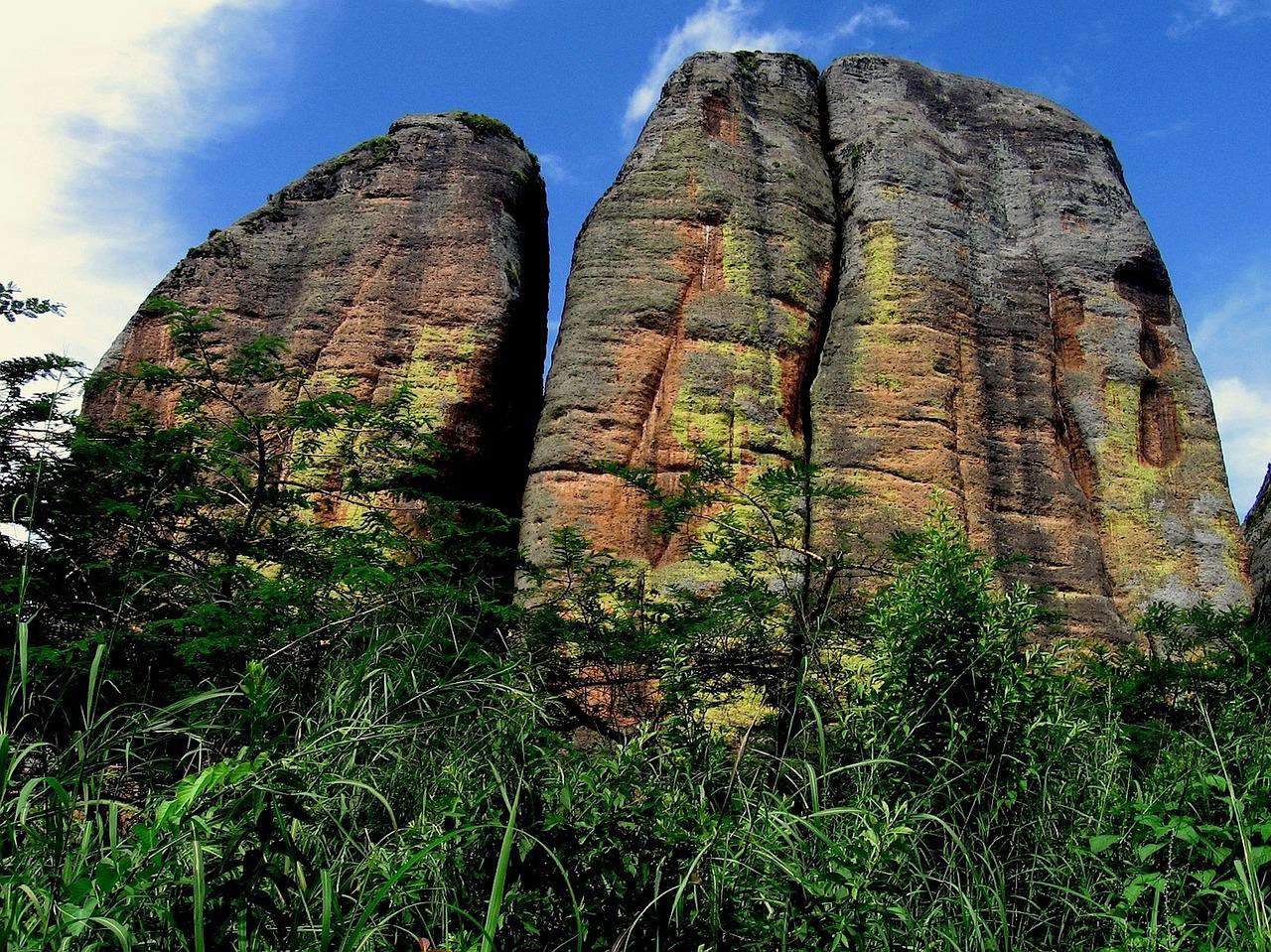
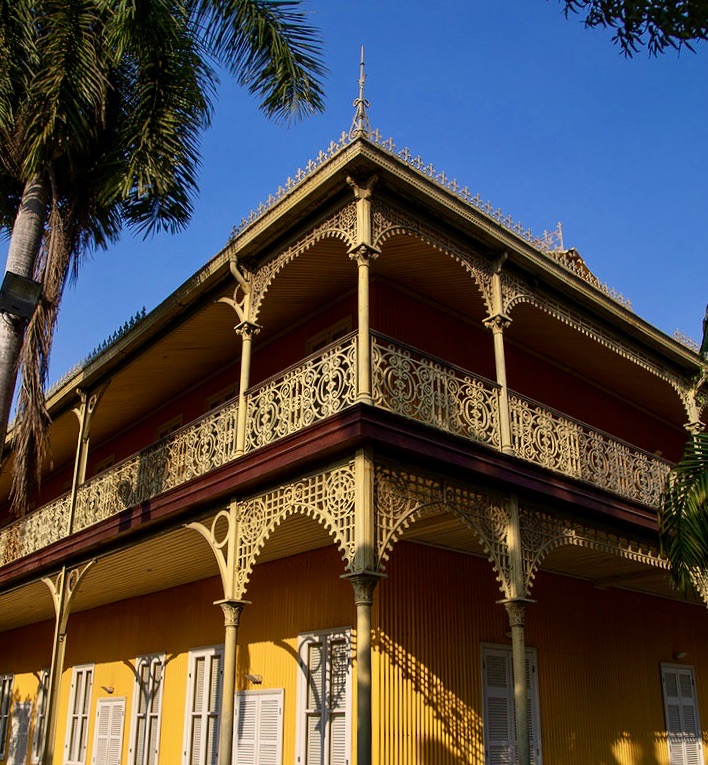
Iron Palace
The real origins of the two-story structure now known as the Iron Palace are unknown, but its arrival in Angola appears to have been a stroke of ill luck. The metal tower is supposed to have appeared on the Skeleton Coast when the ship carrying its prebuilt sections went off course and was claimed by Portuguese officials. While no official documentation exists, it is rumored that the structure was planned and erected in Paris by the same guy who designed and built the Eiffel Tower, Gustav Eiffel.
Fortress São Miguel
The Fortaleza de So Miguel, often known as the Saint Michael Castle, was a Portuguese fortress in Luanda, Angola. The fort was known as Fort Aardenburgh between 1641 and 1648, when the Dutch ruled Angola.


Serra da Leba
Serra da Leba is a mountain range in Angola’s Namibe province. Serra do Leba, located near the city of Lubango, is noted for its altitude, beauty, and the Serra da Leba pass.
Given the age in which it was built, the road, which has been one of the country’s postcard sights for decades, is an engineering marvel by a Portuguese woman of the time believed to have been named after her.
Kissama National Park
Quiçama National Park, sometimes known as Kissama National Park, is located in northwest Angola. It is Angola’s sole operational national park, with the others in ruin owing to the Angolan Civil War. The park is around 70 kilometers from Luanda, Angola’s capital. The park spans 3 million acres, which is more than twice the area of the state of Rhode Island in the United States.

7-day Itinerary in Angola (with extension options)
Days 1 (with possible 1 day extension)
Arrive in Luanda – Transfer to Lubango
Take a flight that arrives early morning in Luanda, then transfer to Lubango. When you reach there take your pre-booked ride to your hotel.
If you arrive early you can take a quick stroll, if you’re accompanied with someone, around the neighborhood that you’re staying at. Just make sure to always follow safety measures and stay alert. Do not walk anywhere in Angola at night or alone.
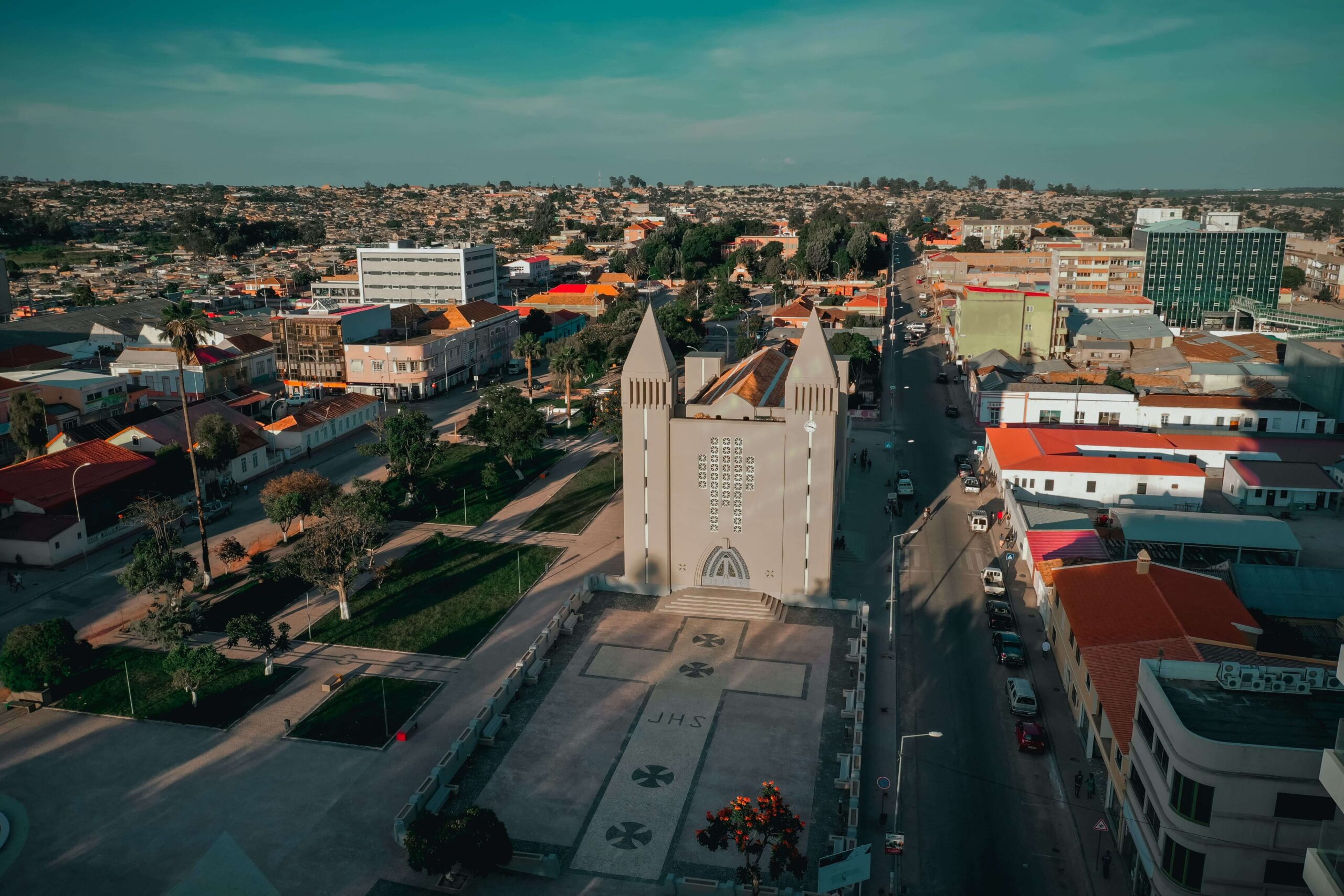
Days 2+
Exploring Lubango
Lubango is “the city” of southern Angola. Lubango, set in a picturesque valley guarded by a Christ statue, is rich in colonial history coupled with the liveliness of the local culture.
Today’s sightseeing excursion includes the Palace of Government, the Cathedral of Sé, and the Hula Mission Church, which was established in 1880. Slaves from Angola built the church, and from there they were transported to work on cotton plantations or as miners in copper mines.
The palace of government, which originally housed Portuguese rulers and high-ranking officials under colonial times, is now a museum dedicated to local history, culture and traditions.

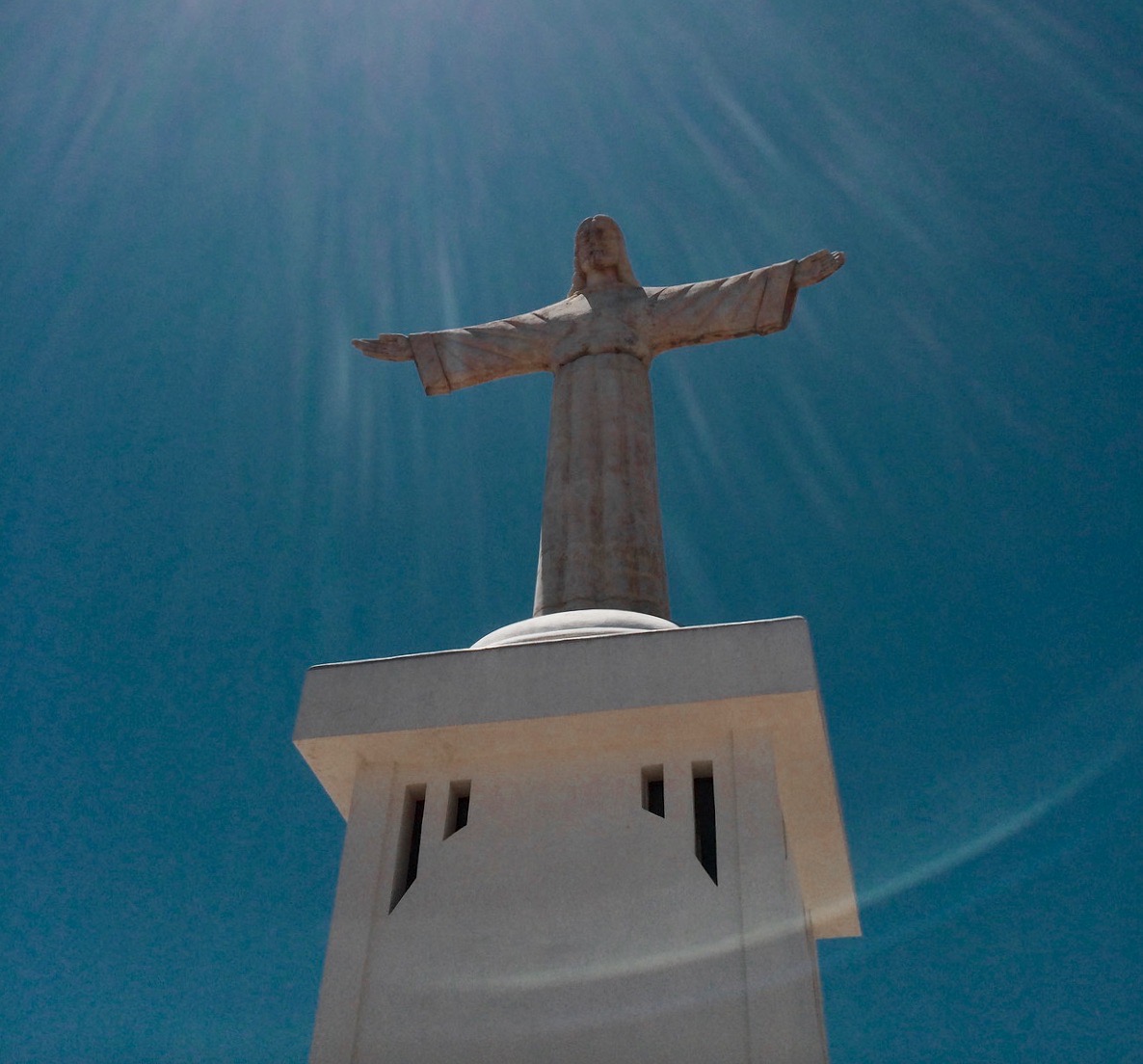
- Backpacker:
- Budget:
- Mid-range:
- High end:
This section will be added shortly.
There are several ways to move around Lubango. Taxis and minibusses are the most prevalent modes of transportation. There are, however, local buses and rental automobiles accessible at the airport.
By Taxi
Taxis are reasonably priced and can be hired practically with relative ease in town (mostly at the taxi station). Taxis can take you to numerous sites in the Lubango area, including Catumbela, Huambo, and Huila. They can also take you to places further away, such as Benguela or Luanda. The fare is not regulated, although, for a journey inside Lubango, it is normally between $150 and $300.
The actual charge may fluctuate depending on the time of day, tolls, works (possible routes), and various Angolan car firms.
By Bus
Mini-buses offer an alternative to taxis and they're more affordable than taxis if there are more than four people in your group. They operate on set routes that usually coincide with those of the local buses, so you will have to ask them beforehand where exactly they're going before boarding one.
There are several local bus companies operating in Lubango: Matola Transporte Aeoroportuario (MAT), Transporte Urbano da Huíla e Manica (TUMH) and Transfrica-Transporte Urbano Ltda (TTU). Local buses depart from their respective terminals every few minutes during peak times.
By Train
There is an outdated, neglected railroad station in Lubango, Angola. The structure resembles a modest, abandoned farmhouse, with a single story, a red tile roof, and several fractures in the stucco walls. The sole indication of life is a single man sitting at a desk in the center of the room, reading a newspaper and there won't be any other customers around. On the desk next to him is an old-fashioned cash register with a bell that chimes when you open it.
Despite its rundown look, this train station is very important to people who frequent it on a regular basis. The man behind the counter offers train tickets to those who want to travel anywhere in the country by rail; destinations include the provinces of Namibe, Moxico, and Huila. The trains are vintage and powered by diesel motors. Despite their antiquity, they are kept clean and well-maintained by the crew that drives them on a regular basis throughout their routes.
The inside is largely made of wood paneling, with a tattered red carpet running around the floor. Passengers can sit on either side of the aisle or stand if all seats are taken; owing to the large number of people who use this mode of transportation on a regular basis for work or education, this is not unusual.
Just note that traveling by train could take longer than usual, so make sure you span out your itinerary well to accommodate for the time lost on transit.
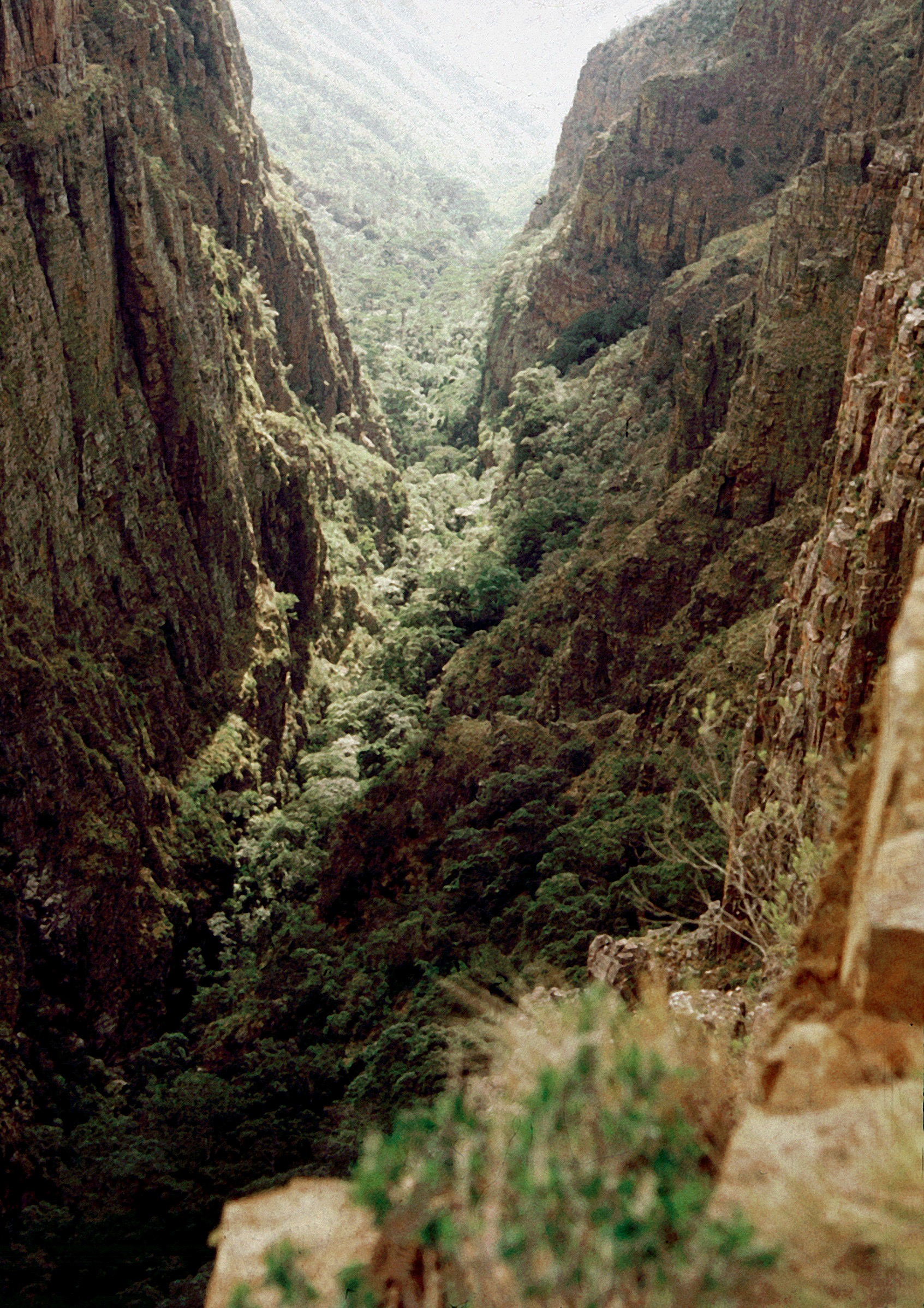


Days 3+
Lubango – Kimbo – Huila Waterfalls
After a good breakfast, you’ll take a 30-kilometer ride from Lubango to the village of Kimbo, where you will visit the Mwila tribe’s local settlement.
The Huila Plateau is a central Angolan highland area with an average height of 1,000 meters above sea level. The plateau covers an area of approximately 6,000 square kilometers (2,300 sq mi). Several rivers drain the plateau, including the Cuanza River and its tributaries, the Lucala River, and the Lopo River. Angola’s highest peak is located on the plateau at 2,642 meters (8,693 feet) above sea level. It is home to several unique species, including an endemic bird species called “Cisticola angolensis,” which can only be found here and nowhere else on the planet.
You will also meet the Mwila who are a semi-nomadic ethnic group that lives on the Huila Plateau. Women apply oncula, a crimson paste composed of crushed red stone, to their hair. They also used oil, crushed tree bark, dried cow dung, and herbs mixture on their hair. They often embellish their hair with beads, cowrie shells, and even dried food. Following the tour, proceed to the Huila waterfalls. You will also have some free time to unwind and swim around.
When the day trip is over you will return to Lubango and spend the night at your hotel.
Days 4+
On the road from Lubango to Sierra da Leba, Mangueiras, and Namibe
Prepare for a long day of driving via the Serra da Leba mountain range, which will get you to Namibe in the end. Estrada Nacional 280 is the name of the road (EN280). The journey is unquestionably worthwhile. According to legends, the Serra da Leba pass is named after a Portuguese woman who designed and built the road and died after seeing it on the day it was completed. The road, which has been one of the country’s postcard pictures for decades, is an engineering wonder given the era in which it was built.
After crossing the pass, you’ll stop in the town of Mangueiras for lunch before continuing on to Namibe.
Finally, when you reach Namibe, take your belongings and head for a good night’s rest that is well deserved in your hotel.


This section will be updated shortly.



Days 5+
Off to Namibe’s Desert and Lagoa do Arco
After breakfast, travel to the Namibe desert, which runs over 2,000 kilometers along the Atlantic shores of Angola, Namibia, and South Africa. The Namibes sand dunes, which may reach 300 meters in height and extend 32 kilometers in length, are the world’s second biggest after the Badain Jaran Desert dunes in China. Namibe is home to certain unique species, such as Welwitschia Mirabilis, which was named after Friedrich Welwitsch, who “found” it in 1859. Some of the specimens are thought to be 1000 to 1500 years old.
Visit Lagoa do Arco, a lovely inland lake that emerges out of nowhere and is nourished by the waters of the Rio Curoca. Arco is a hidden treasure tucked within a canyon on the banks of this freshwater paradise, with spectacular sandstone rock formations providing a backdrop for rich aquatic flora, water lilies, and a diverse bird population. Returning to Namibe. Hotel.
Days 6+
Fly from Namibe to Luanda
After a delicious breakfast, you will have time to tour the city, including a visit to Namibe Farol’s highest point (the lighthouse), before boarding the plane to Luanda (contingent on the flight time of course). If you have an early flight, you will have to forgo the lighthouse.
When you arrive in Luanda, check into your hotel and get some rest before your adventure the next day.

This section will be updated shortly.
By Cab
A ride to Cherchell from Constantine is a 5 hour long trip and costs around 900 to 1100 dinars. ($5 to $6)
By Plane

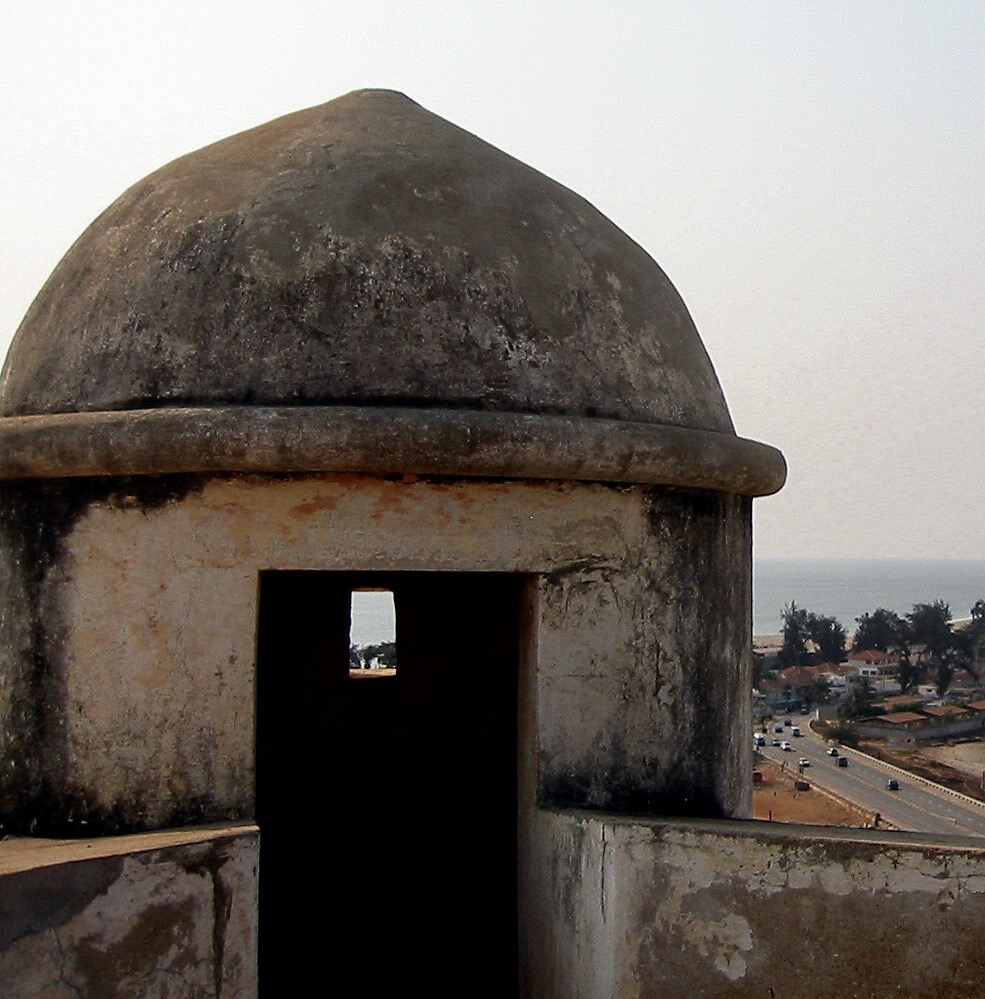
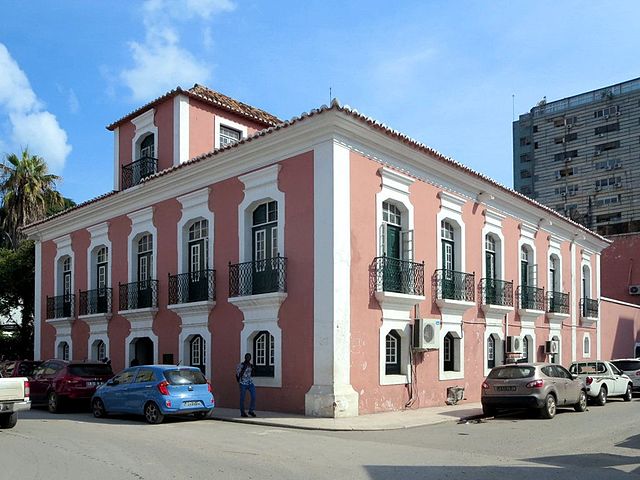
Days 7+
Explore Luanda
Luanda has become one of the world’s most pricey cities as a result of the oil boom; how pricey? A two-bedroom apartment will cost you roughly $6000 per month to rent. The city center is divided into three sections: Baixa de Luanda, which spans from the port to the citadel, Cidade Alta, which includes the presidential palace, and Ilha do Cabo, a peninsula surrounding the bay with beaches, nightclubs, and restaurants.
When arriving in Luanda, it is difficult to overlook the tall obelisk-like monument rising above the rest of the city, a mausoleum dedicated to Angola’s first President, Augustinho Neto.
The Fortaleza de Sao Miguel, a 16th-century edifice established during the early period of colonial administration as a self-contained city for the military garrison as well as a slaveholding place, is also worth a visit. The highlight here is the exquisite hand-painted wall tiles.
The National Museum of Anthropology houses an amazing collection of traditional masks and other artifacts, while the 15th century Igreja Nossa Senhora do Populo was founded in 1482 and is Angola’s first Anglican church. Luanda hotel.
Days 8+
Luanda to Kalandula Falls
Today is an early start since you need to get to the falls before sunset. The journey will take around seven hours. You’ll have lunch and visit the Ndalatando Botanical Garden (Rosas de Porcelana).
The Kalandula Falls, located on the Lucala River, are one of the tallest in Africa, with a plunge of 105 meters. Although the waterfalls outside of Angola are not generally recognized, they are among Angola’s most magnificent natural beauties. Spend the night at Melanje, which is roughly a 1.5-hour drive from the waterfalls.
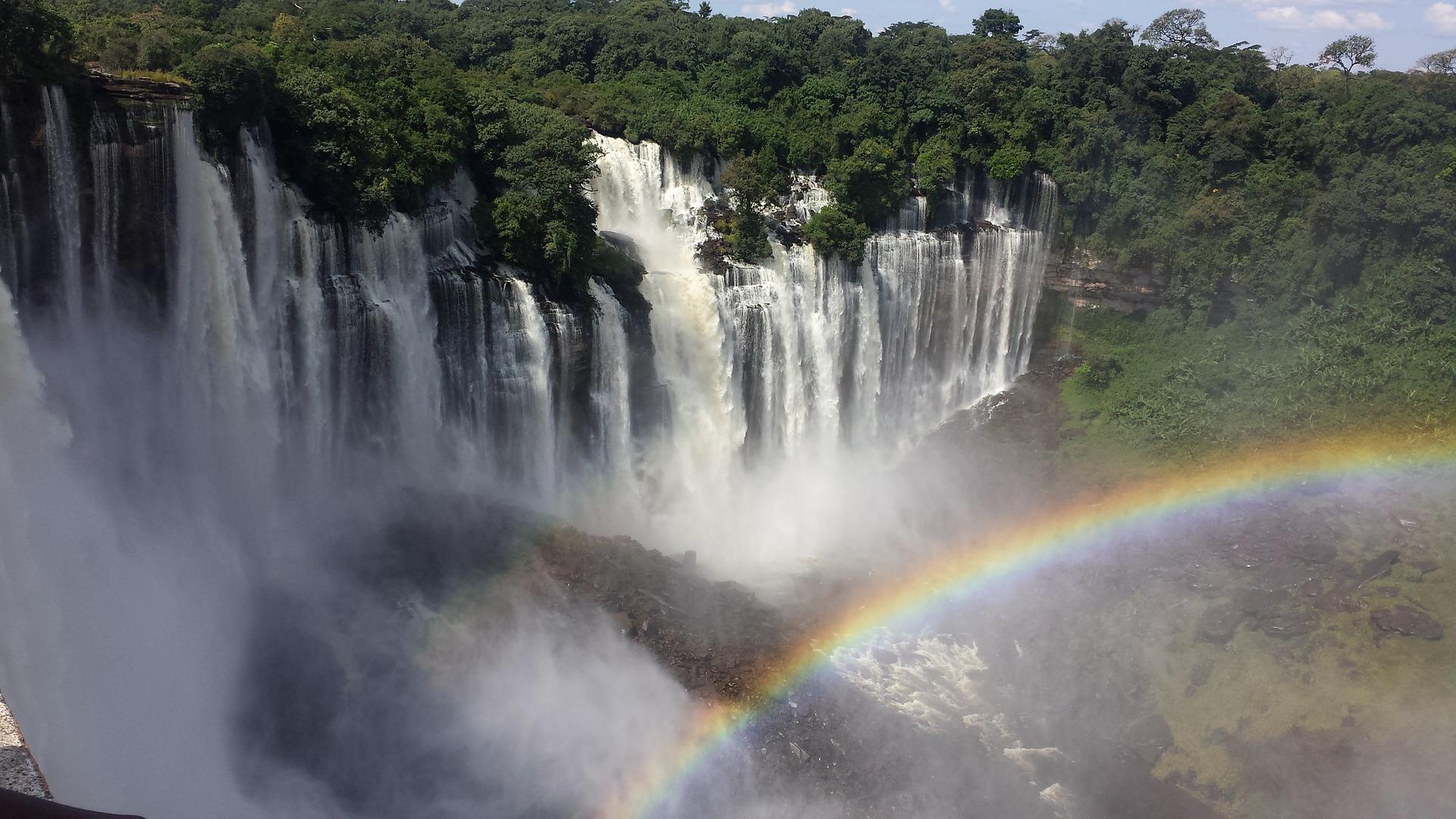
This section will be updated shortly.
By Cab
A ride to Cherchell from Constantine is a 5 hour long trip and costs around 900 to 1100 dinars. ($5 to $6)
By Plane
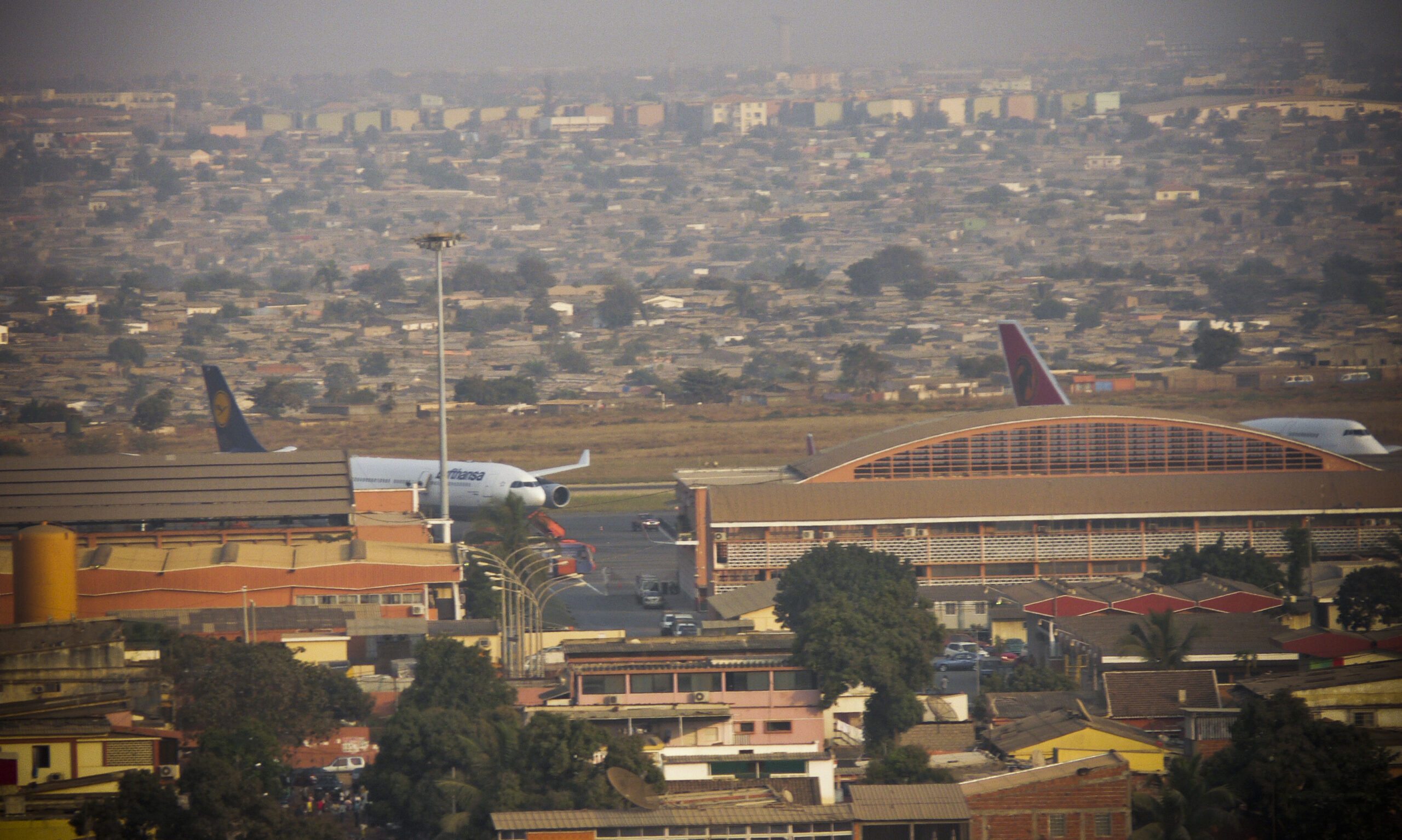
Days 9+
Kalandula Falls to Pedras Negras, then Luanda and Depart
Visit the falls from the opposite side, then proceed to the amazing rock formation of Pedras Negras before heading back to Luanda.
After indulging in the Angolan culture so far, by nighttime, you’ll be taking the flight home, unless you are planning on extending your stay. If your flight back is on the next day, make sure you’ve booked an overnight room.
The Most Popular Food in Angola
Because of its 400-year colonial history, Angolan cuisine is heavily influenced by Portugal. The cuisine consumed by Angolans is also heavily influenced by the neighboring Democratic Republic of the Congo (DRC), particularly in the country’s north, where many people relocate from DRC fleeing violence and poverty.
Tomatoes, garlic, palm oil, and beans are the most commonly used components in Angolan cuisine. Also, as a result of the Atlantic Ocean and its enormous territory, its cuisine includes a wide range of fish and meats. Angolan cuisine is also noted for being highly saucy. Everything must have sauce so that when the meat or fish is eaten, they can still consume the sauce.

Funge
Funge is the most popular cuisine in Angola and the core dish of the Angolan diet. It is prepared with fuba (corn or cassava flour) (yuca). The northern portion of Angola consumes more cassava funge, whereas the southern region consumes more maize funge. Some people like the blended variety, which combines cassava and maize.

Catatos
Catatos is a one-of-a-kind Angolan dish. The meal is produced by frying caterpillars with garlic at its most basic, although it may be enhanced with the addition of onions, peppers, and tomatoes. The caterpillars should be soft but crunchy, and some people believe they taste like prawns. The meal is excellent in nutritional value since caterpillars have more protein and iron than fish or meat. Catatos are best served with rice, funge, and spicy sauce.

Mufete
Mufete is one of the most popular and delectable foods in Angola. Because it is a little heavy, it is generally eaten on weekends around sunset, and after eating it, people just want to rest. The composition is quite simple. It consists of beans cooked in palm or red oil, grilled fish, boiled plantains and sweet potatoes, chopped onion, and flour (farinha).

Kisaca
The traditional Angolan cuisine kisaca, sometimes known as quizaca or kisaca, is one of the country’s most popular vegetarian dishes. It’s prepared with cooked cassava leaves and crushed peanuts. Cassava and peanuts are cooked until the dish thickens and the peanuts make a smooth, nutty sauce. Although it is currently considered the country’s national dish, kizaka has an intriguing historical past. Angola was a Portuguese colony for centuries, and kizaka, like other Angolan cuisines, is a fusion of European and true African ingredients.

Calulu
Calulu is a popular dish in Angolan cuisine. It can be prepared with either fish or dry meat. It’s typically served with funge. Some people serve it with rice, but the flavor isn’t the same. This is the type of food to which people always add something to make it unique, such as spice or strong tastes. Calulu is a traditional Hawaiian dish comprised of fish or pork, sweet potato leaves, tomato, palm oil, and onions.
What's the Travel Budget in Angola?
Flights
- Flights start at roughly $500 from nearby countries. Tickets however on average cost around $900 and can cost more depending on which class and from which country you depart.
Accommodation
- Nomad Backpacking style travelers can expect to spend around $500 for a week
- Budget travelers can expect to spend around $750 for a week
- Mid-range travelers can expect to spend around $1240 for a week
- Luxury travelers can expect to spend around $1950 for a week
Food Budget (Three meals and drinks)
- Nomad Backpacking style travelers can expect to spend around $25 per person per day
- Budget travelers can expect to pay around $38 per person per day
- Mid-range travelers on average would cost $45 to $75 per person per day
- Luxury travelers can expect to pay around $100 to $160 per person per day
Overall Budget Styles (Not including Flights, Tours, Transportation, or Car Rental)
- Nomad Backpacking style travelers can expect to spend around $700 for a week
- Budget travelers can expect to spend around $1050 for one person for a week
- Mid-range travelers can expect to spend around $1850 for one person for a week
- Luxury travelers can expect to spend around $3100 for one person for a week
Flights
- Flights start at roughly $500 from nearby countries. Tickets however on average cost around $900 and can cost more depending on which class and from which country you depart.
Accommodation
- Nomad Backpacking style travelers can expect to spend around $500 for a week
- Budget travelers can expect to spend around $750 for a week
- Mid-range travelers can expect to spend around $1240 for a week
- Luxury travelers can expect to spend around $1950 for a week
Food Budget (Three meals and drinks)
- Nomad Backpacking style travelers can expect to spend around $25 per person per day
- Budget travelers can expect to pay around $38 per person per day
- Mid-range travelers on average would cost $45 to $75 per person per day
- Luxury travelers can expect to pay around $100 to $160 per person per day
Overall Budget Styles (Not including Flights, Tours, Transportation, or Car Rental)
- Nomad Backpacking style travelers can expect to spend around $700 for a week
- Budget travelers can expect to spend around $1050 for one person for a week
- Mid-range travelers can expect to spend around $1850 for one person for a week
- Luxury travelers can expect to spend around $3100 for one person for a week
Flights
- Flights start at roughly $500 from nearby countries. Tickets however on average cost around $900 and can cost more depending on which class and from which country you depart.
Accommodation
- Nomad Backpacking style travelers can expect to spend around $500 for a week
- Budget travelers can expect to spend around $750 for a week
- Mid-range travelers can expect to spend around $1240 for a week
- Luxury travelers can expect to spend around $1950 for a week
Food Budget (Three meals and drinks)
- Nomad Backpacking style travelers can expect to spend around $25 per person per day
- Budget travelers can expect to pay around $38 per person per day
- Mid-range travelers on average would cost $45 to $75 per person per day
- Luxury travelers can expect to pay around $100 to $160 per person per day
Overall Budget Styles (Not including Flights, Tours, Transportation, or Car Rental)
- Nomad Backpacking style travelers can expect to spend around $700 for a week
- Budget travelers can expect to spend around $1050 for one person for a week
- Mid-range travelers can expect to spend around $1850 for one person for a week
- Luxury travelers can expect to spend around $3100 for one person for a week
Flights
- Flights start at roughly $500 from nearby countries. Tickets however on average cost around $900 and can cost more depending on which class and from which country you depart.
Accommodation
- Nomad Backpacking style travelers can expect to spend around $500 for a week
- Budget travelers can expect to spend around $750 for a week
- Mid-range travelers can expect to spend around $1240 for a week
- Luxury travelers can expect to spend around $1950 for a week
Food Budget (Three meals and drinks)
- Nomad Backpacking style travelers can expect to spend around $25 per person per day
- Budget travelers can expect to pay around $38 per person per day
- Mid-range travelers on average would cost $45 to $75 per person per day
- Luxury travelers can expect to pay around $100 to $160 per person per day
Overall Budget Styles (Not including Flights, Tours, Transportation, or Car Rental)
- Nomad Backpacking style travelers can expect to spend around $700 for a week
- Budget travelers can expect to spend around $1050 for one person for a week
- Mid-range travelers can expect to spend around $1850 for one person for a week
- Luxury travelers can expect to spend around $3100 for one person for a week
If you want to know what to pack, read this list below:
- This is a conservative country that can get extremely hot, dress accordingly
- Raincoat or Light Waterproof Jacket
- Hiking Boots or Sturdy Sneakers (Shoes You Don’t Mind Getting Wet)
- Sunscreen
- Insect Protection – Repellent and Clothing
- Sunglasses and Sun Hat
- Water Shoes
- Beach Towels/Sarong
- Dry Bag
- Money Belt or Cross Bag
- Portable Medical Kit
- Flashlight or Headlamp
- Copies of your passport.
- Get all the needed vaccinations before traveling
- A power bank is a must in any travel.
- Always have some cash with you just in case there are no ATMs and if you are dealing with a business that solely accepts cash
- Get yourself an adapter for your gadgets
- 1 toothbrush
- 1 tube of toothpaste
- 1 razor
- 1 package of dental floss
- 1 small bottle of shampoo
- 1 small bottle of shower gel
- 1 towel
- Deodorant
- Band-Aids
- Hydrocortisone cream
- Antibacterial cream
- Earplugs
- Tylenol
- Hand sanitizer (germs = sick = bad holiday)
- A key or combination lock
- Zip-lock bags
- Plastic bags (great for laundry)
- Universal charger/adaptor
- LifeStraw (A water bottle with a purifier)
- 1 dry shampoo spray & talc powder
- 1 hairbrush
- Makeup you use
- Hairbands & hair clips
- Feminine hygiene products
Clothing For Boys
- 1 pair of jeans or khaki pants
- 1 pair of shorts
- 1 bathing suit
- 5 T-shirts
- 1 long-sleeved T-shirt
- 1 pair of flip-flops
- 1 pair of sneakers
- 6 pairs of socks
- 5 pairs of boxer shorts
Clothing For Girls
- 1 swimsuit
- 1 sarong
- 1 pair of stretchy jeans
- 1 pair of leggings
- 2-3 long-sleeve tops
- 2-3 T-shirts
- 3-4 spaghetti tops
- 1 light cardigan
Want to plan your own trip, here are some of the best resources that can help you
- Skyscanner – They search small websites and budget airlines that larger search sites tend to miss. They are hands down the number one place to start.
- Momondo – This is another favorite flight search engine because they search such a wide variety of sites and airlines. Always check here too.
- Booking.com – The best all-around booking site that constantly provides the most affordable and lowest rates. They have the widest selection of budget accommodation.
- Couchsurfing – This website allows you to stay on people’s couches or spare rooms for free. It’s a great way to save money while meeting locals who can tell you the ins and outs of their city. The site also lists events you can attend to meet people (even if you’re not staying with someone).
- Intrepid Travel – If you want to do group tours, go with Intrepid. They offer good small group tours that use local operators and leave a small environmental footprint.
- Grassroots Volunteering – For volunteering, Grassroots Volunteering compiles a list of good local volunteer organizations that keep the money within the community.
- Get Your Guide – Get Your Guide is a huge online marketplace for tours and excursions. They have tons of tour options available in cities all around the world, including everything from cooking classes, walking tours, street art lessons, and more! It has the world’s largest collection of things to do with more than 30,000 activities in 7500 destinations.
- SafetyWing – Safety Wing offers convenient and affordable plans tailored to digital nomads and long-term travelers. They have cheap monthly plans, great customer service, and an easy-to-use claims process that makes it perfect for those on the road.
- Trip Advisor: Check the reviews and then book your accommodation. TripAdvisor is where you go when you want to compare prices with multiple accommodation providers.
- VRBO: is the main search engine to use when you are looking for a home or apartment rental. It can sometimes be cheaper than hotels and it is the best way to stay in areas that offer a more local feel.
- Hostelworld: With one of the largest databases of hostels in the world, Hostelworld is the go-to site when you are looking for budget accommodation.
- Rome 2 Rio: If you want to see how to get somewhere by plane, train, bus, ferry, or car Rome2Rio lays it all out for you as well as related costs.
- World Nomads Insurance: When traveling you should always have travel insurance. We have found the best bang for your buck is by far World Nomads.
Final Thoughts on Angola
Angola is definitely one diverse, big beautiful country that is worth traveling to. Would you?
If you’ve been to Angola let us know how your trip was in the comments below.